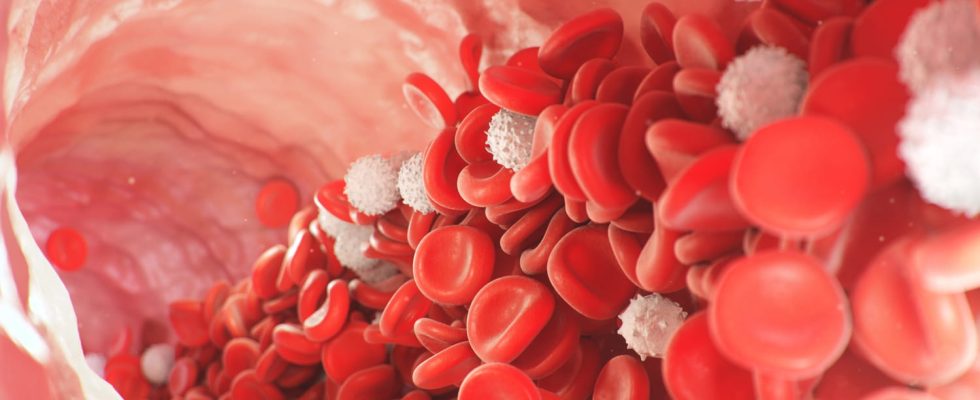Red blood cells or “erythrocytes” are counted during an NFS VS, one of the most prescribed examinations in blood sampling. An abnormal level of red blood cells can reveal anemia.
There NFS (blood count) VS (sedimentation rate) is one of the most frequently ordered blood tests. This examination allows count the different blood cells and to measure their proportion in the blood plasma, component of the liquid of the blood in which the blood cells bathe. So, red blood cells, white blood cells and platelets are counted during CBC VS. The sedimentation rate does not really belong to the hemogram. It is often prescribed with the NFS because it is necessary to add, in the hemogram, platelets, cells used for coagulation. ESR most often reflects an inflammatory state of the patient.
THE red blood cells or “red blood cells” or “erythrocytes” designate cells without a nucleus that circulate in the blood. They serve to carry oxygen to the cells and reject the carbon dioxide. Indispensable, red blood cells allow us to live. Each red blood cell contains hemoglobin, iron-rich protein. Hemoglobin is a protein that transports oxygen from the lungs to the various organs of the body and removes carbon dioxide from the organs to the lungs. Hemoglobin brings the red color of blood. Hemoglobin contains 65% of the body’s iron reserves. The calculation of red blood cells makes it possible to detect certain pathologies such as anemia.
Norms vary according to multiple factors (children, women, men). The rate also changes in pregnant women. The normal level of hemoglobin in men is between 13 and 18 g/dl and in women between 11.5 and 15.0 g/dl. The results of this blood test can guide the diagnosis, they must be compared with the clinical examination which will have been carried out by your attending physician. It is with all the biological results and other explorations that your doctor will be able to give you the necessary treatments. THE total number of red blood cells is approximately between 3.5 million to 6 million per mm3 of blood. It varies according to age, gender and pregnancy status in a woman.
• Babies and children
In babies the number of red blood cells is around 5.8 million/mm3 and hemoglobin is around 13 to 16 g/dl. In children, the number of red blood cells is between 3.6 and 4.8 million/mm3 depending on the age of the child and a hemoglobin of approximately between 11 and 12 g/dl.
• Men
The number of red blood cells in men is between 4.5 and 6 million/mm3 with a hemoglobin between 13 and 18 g/100 dl.
• Women
The number of red blood cells in women is including 4 and 5.4 million/mm3 with a hemoglobin of the order of 14 g/100 dl. These numbers are reduced in a pregnant woman.
The red blood cell count is measured during a blood test. “It is necessary to have them dosed in case of lack (anemia) or for patients who have too many red blood cells (polycythemia)”advises François Blanchecotte, president of the Union of Biologists.
A red blood cell takes 3 months to be produced by the bone marrow.
Once the blood sample has been taken, the result must be interpreted. “You have to ask your medical biologist or doctor for an interpretation of the results, not to panic. A red blood cell takes three months to be produced by the bone marrow.most anemias are very treatable with medication and above all, perfect injustice, women with menstruation lose blood and have less iron reserves in their liver than men”specifies the president of the Syndicate of biologists.
If the figures are higher than the norm, polycythemia can be evoked. A polycythemia is an increase in red blood cells in the blood. A distinction is made between primary polycythemia, due to an exacerbated functioning of the bone marrow which produces red blood cells, and secondary polycythemia. Polycythemia is responsible for an increase in the viscosity of the blood conferring more risks of making phenomena of thromboses.
Certain factors can affect the number of red blood cells. “Endogenous” causes, your bone marrow decreases production or exogenous causes, you lack components to make them (iron, vitamin B12 or folate for example)“, explains François Blanchecotte. This results in fatigue, dyspnea (breathing difficulty), tachycardia, pallor, weight loss, headaches.
Thanks to François Blanchecotte, president of the Union of Biologists.
